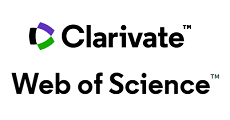Published
Inversion Technique of Physical Parameters Based on Regularization Extension Depth Constraint
Técnica de inversión de parámetros físicos basada en la regularización de restricción de extensión de profundidad
DOI:
https://doi.org/10.15446/esrj.v23n4.84340Keywords:
regularization, iterative continuation, anomaly separation, physical parameters, inversion, (en)regularización, continuación iterativa, separación de anomalías, parámetros físicos, inversión, (es)
Downloads
Through the regularization downward continuation of gravity and magnetic anomalies, the depth of the field source can be solved. However, due to the Gibbs effect, the horizontal resolving power of the field source is poor. In view of this, based on the depth of field source established by regularization downward continuation, this paper proposes a physical property parameter inversion method based on iterative continuation and anomaly separation, which can effectively improve the inversion accuracy of superimposed anomaly physical parameters, and provide a new idea for solving the physical parameters of superposition gravity and magnetic anomalies.
A través de la regularización de la gravedad y las anomalías magnéticas, se puede resolver la profundidad de la fuente del campo. Sin embargo, debido al efecto Gibbs, el poder de resolución horizontal de la fuente de campo es poco. En vista de esto, basado en la profundidad de la fuente de campo establecida por la continuación de la regularización hacia abajo, este artículo propone un método de inversión de parámetros de propiedades físicas basado en la continuación iterativa y la separación de anomalías, que puede mejorar efectivamente la precisión de inversión de los parámetros físicos de anomalías superpuestas, y proporcionar una nueva idea para resolver los parámetros físicos de la superposición de gravedad y anomalías magnéticas.
References
Al Farajat, M., Schaefers, B., Al Hassanat, H., Al Atteyat, N., Al Jahed, N., & Khataibeh, J. (2015). Using GIS and geophysics in selecting suitable basins with freshwater aquifers for an efficient exploration strategy - A case study from Petra-region, Jordan. Earth Sciences Research Journal, 19(1), 39-50.
Boehm, C. & Ulbrich, M. (2015). A semismooth newton-cg method for constrained parameter identification in seismic tomography. Siam Journal on Scientific Computing, 37(5), S334-S364.
Chen, Y. (2015). Iterative Deblending With multiple constraints based on shaping regularization. IEEE Geoscience & Remote Sensing Letters, 12(11), 2247-2251.
Deng, C. L., Liu, H. J., Song, B. H., & Chen, J. (2014). Density parameters inversion for structures based on regularization method. Journal of Guilin University of Technology.
Fontchastagner, J., Lubin, T., Mezani, S., & Takorabet, N. (2018). Design optimization of an axial-field eddy-current magnetic coupling based on magneto-thermal analytical model. Open Physics, 16(1), 21-26.
Li, C. & Zhang, F. (2017). AVA inversion based on the L1-norm-based likelihood function and the Total Variation Regularization constraint. Geophysics, 82(3), 1-54.
Mazgaj, W., Szular, Z., & Szczurek, P. (2017). Calculations of magnetic field in dynamo sheets taking into account their texture. Open Physics, 15(1): 1034-1038.
Raknes, E. B. & Arntsen, B. (2014). Time-lapse full-waveform inversion of limited-offset seismic data using a local migration regularization. Geophysics, 79(3), WA117-WA128.
Zhang, F., Dai, R., & Liu, H. (2014). Seismic inversion based on L1-norm misfit function and total variation regularization. Journal of Applied Geophysics, 109, 111-118.
Zhang, Y,. Yan, J., Li, F., Chen, C., Mei, B., Jin, S., & Dohm, J. H. (2015). A new bound constraints method for 3-D potential field data inversion using Lagrangian multipliers. Geophysical Journal International, 201(1), 267-275.
Zhu, Z. Q., Cao, S. J., Lu, G. Y. (2014). 3D gravity inversion with bound constraint based on hyper-parameter regularization. The Chinese Journal of Nonferrous Metals, 24(10), 2601-2608.
How to Cite
APA
ACM
ACS
ABNT
Chicago
Harvard
IEEE
MLA
Turabian
Vancouver
Download Citation
License
Copyright (c) 2020 Earth Sciences Research Journal

This work is licensed under a Creative Commons Attribution 4.0 International License.
Earth Sciences Research Journal holds a Creative Commons Attribution license.
You are free to:
Share — copy and redistribute the material in any medium or format
Adapt — remix, transform, and build upon the material for any purpose, even commercially.
The licensor cannot revoke these freedoms as long as you follow the license terms.
The Earth Sciences Research Journal is the copyright holder for these license attributes.























